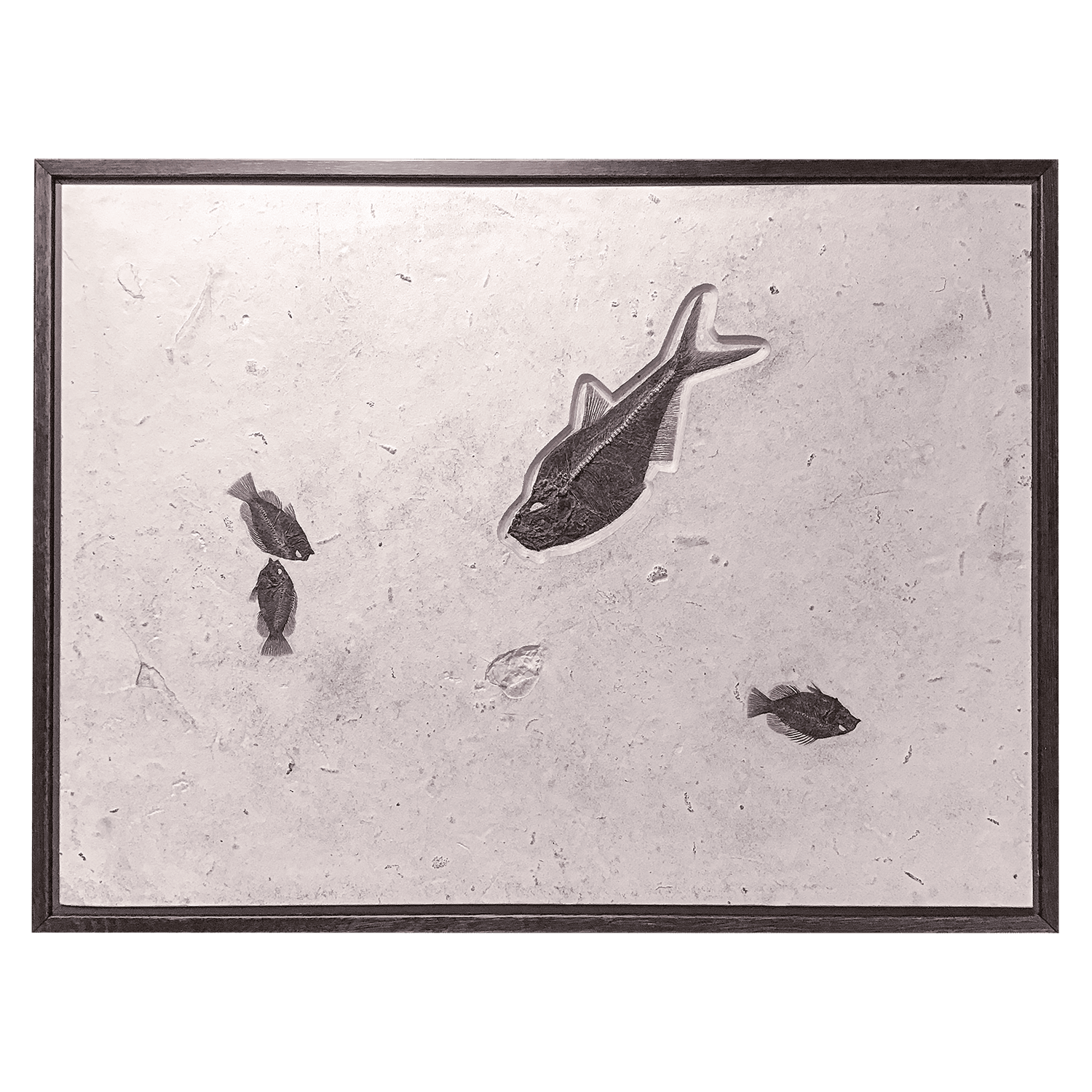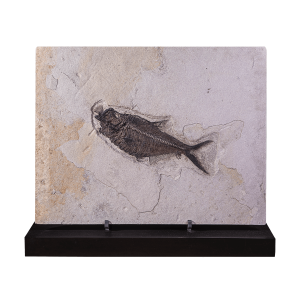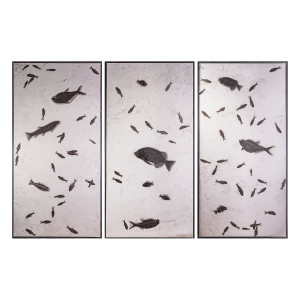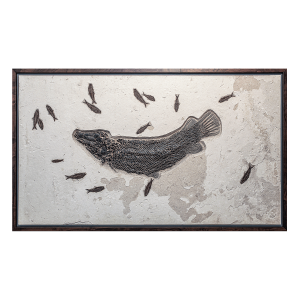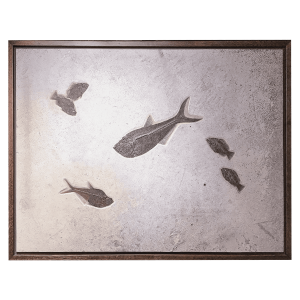Fossil Fishes Mural
This fossil fishes mural is a stunning display of prehistoric life preserved in stone. It captures a dramatic moment beneath the surface of an ancient lake, where a predator moves among its prey. The chocolate-brown fossilized fish stand out in beautiful contrast against a cream-colored limestone matrix.
This artwork features specimens from the world-famous Green River Formation in Wyoming. Known for its abundance of vertebrate fossils, the site preserves a variety of life from over 50 million years ago. The mural includes a striking Diplomystus – an extinct herring – surging toward a group of three Priscacara, an extinct species of perch.
Every detail is remarkably clear. You can see delicate fins, ribs, and even vertebrae, all skillfully revealed by expert fossil preparators. A custom walnut frame adds warmth and elegance, turning this scientific treasure into a piece of art.
The fossil fishes mural doesn’t just decorate a space – it brings the past to life. It offers a unique glimpse into Earth’s natural history, where ancient lakes once teemed with life. Whether in a private collection, office, or gallery, this piece invites reflection, conversation, and a deep appreciation for the planet’s story.
Private negotiation
Details
| Specimen | Diplomystus sp. – Priscacara sp. |
|---|---|
| Geological Period | Eocene |
| Age | 55 Million Years Old |
| Origin | Green River Formation – Wyoming (USA) |
| Dimensions | L 50 x D 3 x H 38 in (L 127 x D 8 x H 96 cm) |
| Weight | 66 lb (30 kg) |
Diplomystus are one of the most common genera across the Green River Formation. The large fish likely swam alone, and its morphology and shape of the mouth suggest it hunted near the water’s surface. Due to its thin scales, they are rarely well preserved and must be prepared by the most skillful restoration artists.
Priscacara are distinguished from other Green River fish by their disc shape and have not been identified outside of the Eocene geologic period. A smaller fish that sometimes grew up to 16 inches long, it was believed to swim in schools feeding on gastropods and crustaceans. They evolved spines, thought to defend against predators like the Diplomystus.
Related Articles
Please contact us at Geoworld USA
Phone : +1 520 884 4867
Mail : gallery@geoworldusa.com

